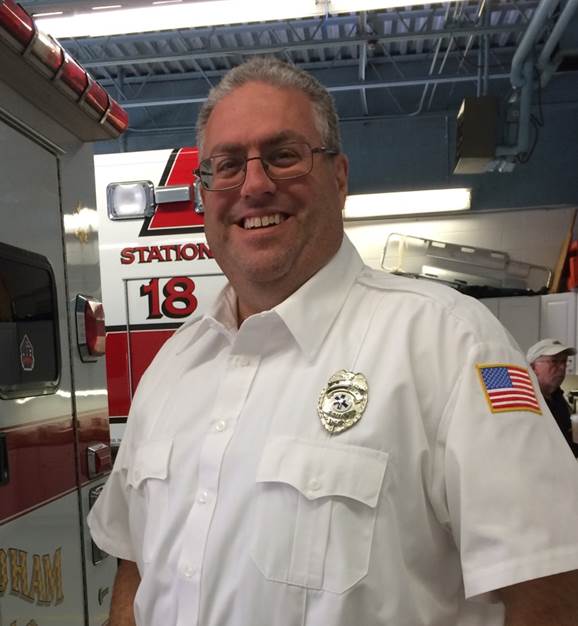|
Part of the practical skills we've been focusing on in class are the primary and secondary assessments that EMTs do on patients. While the primary assessment is done on scene, and focuses on managing life threats, the secondary assessment can be done on scene or in the back of the ambulance while we are transporting a patient to the appropriate medical center. The secondary assessment, if we aren't still actively managing life threats (like performing CPR), allows for a more through inspection of the patient, either for a specific injury or illness symptom (assuming they are conscious and alert enough to talk with us), or a full-body scan intended to ensure we don't miss any additional injuries (which is especially important with an unconscious or unresponsive patient, or even a conscious one with an altered mental status). This also includes taking critical vital signs, including pulse and blood pressure, in order to determine if our interventions are producing the right positive results, or whether our patients are sliding towards dangerous grounds, such as shock. So ... Who would have thought that one of the best study aids I could get for this stuff would be my 8-year old son and his imagination? Like most kids, my son is both curious and inventive. Each night, at bed time, we talk about what he's learned in school, and he asked me, in return, what I'm learning about in EMT classes.
And while I'm not ready to review the section on obstetrics and gynecological emergencies with him, I took time to pull out the stethoscope and BP cuff, and we practiced taking vitals, listening to heartbeats and lung sounds on one another, and taking pulses from the carotid and other pulse points. They must've been doing some of this in his gym class, because he already knew that he couldn't use this thumb to take a pulse, because "it has it's own heartbeat" (meaning pulse), and would mess up the counting. As I explained the whole approach of assessments, he promptly pulled out one of his stuffed animals and told me that it wasn't feeling well, and that I should figure out what was wrong. And so we proceeded to run through the secondary assessment steps, using the mnemonics of SAMPLE and OPQRST. SAMPLE helps EMTs gather critical patient information, including the Signs we observer and Symptoms the patient reports, as well as information on Allergies and Medications. We also gather Pertinent medical history, information on the Last oral intake of food or drink, and the Event(s) that led up to the current issue and reason EMS was called. OPQRST, on the other hand, focuses more specifically on the illness or injury itself, in terms of the time on Onset, and anything that Provokes (makes it worse) or Palliates (makes it better). We ask questions about the Quality of the pain or discomfort (how it feels - sharp, dull, throbbing, etc.), The Region of the body in which is it felt (and whether it Radiates or refers to other body parts, much like a heart attack may be felt as pain down the left arm as well), and the Severity of the pain on a scale of 1 to 10. Finally, we ask about Time, and whether the pain comes and goes or is a constant one. As I said before, this requires asking a lot of questions, and a creative 8-year old appears to have no problem coming up with answer for each and every one of these. While this history may be useful to EMTs, it will be even more critical when we transfer care to the hospital staff or, if need be, paramedics who join us on-scene or mid-transport in order to provide more advanced care than we are trained for. And so, each night we find ourselves administering care to one sick stuffed animal after another, running through the steps the EMT instructors are trying to drill in to my head so that I don't forget to ask for a piece of patient history. Sigh... I may have created a bit of a problem for myself here. But seeing as the only way to pass the EMT course, much like trying to get to Carnegie Hall, is to practice, practice, practice, it's probably not the worst thing in the world for my son to have such a great imagination. Besides, I think my wife is going to get tired of my asking to take her blood pressure every day.
0 Comments
Your comment will be posted after it is approved.
Leave a Reply. |
AuthorJon Alperin, one of our MFAS volunteers, shares his journey to becoming an NJ certified EMT. from the Start
Here is Jon's journey, presented in time order:
Archives
June 2016
Categories
All
|


 RSS Feed
RSS Feed
